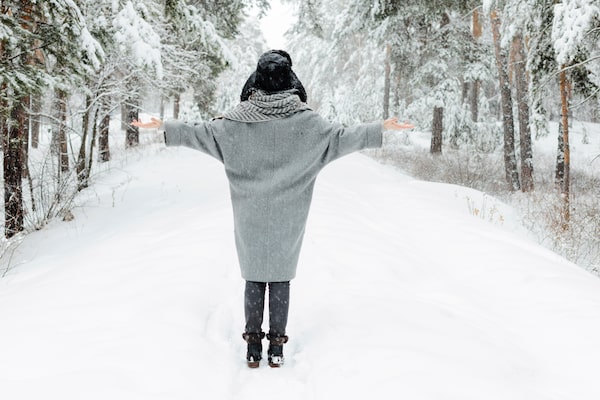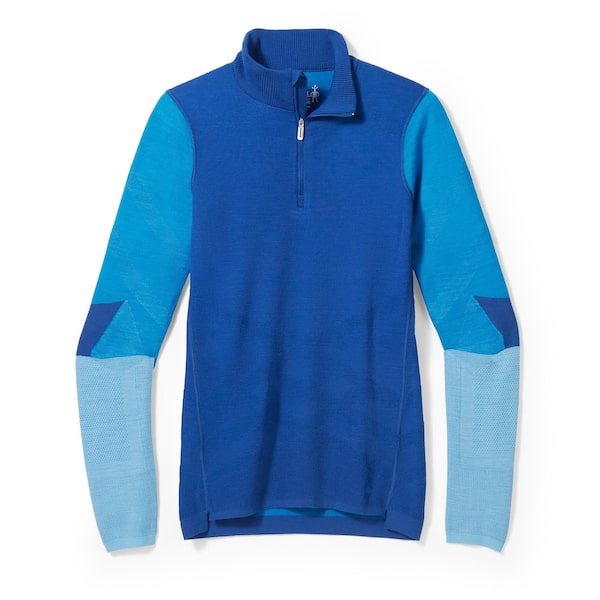
When choosing base layers, start by thinking about your level of activity, and how cold it might get where you live.Anastasiya Gepp/Pexels
When it’s really cold out and you’re in motion – whether you’re skiing, winter running, or walking the dog – base layers are key for keeping warm and comfortable.
A cozy mid-layer under a heavy-duty parka might be sufficient when you’re just standing around, but a moisture-wicking base layer is essential for staying dry when you are working up a sweat. It offers some insulation, “but the big thing that the base layer is doing is wicking the sweat off of your skin surface so that you are not cooling from having that sweat right next to your skin,” says Dr. Stephen Cheung, a professor in the Department of Kinesiology at Brock University, whose research focuses on environmental stress and how it impacts human physiology and performance. “It also more evenly distributes the sweat over your body surface rather than having it really concentrated in one part.”
But shopping for this wintertime staple can be a challenge, because similar looking styles are available at a wide range of price points and in a variety of different materials – including new, high-performance fabric blends that can be harder to compare from brand to brand. Ultimately, finding the best base layers for your needs might require some research, and a bit of trial and error.
Start by thinking about your level of activity, and how cold it might get where you live. “Generally, the thicker the fabric, the more insulative it is going to be,” says Dr. Cheung. But equally important for keeping dry and warm in cold weather, especially during exercise, is the fabric’s wicking performance.
“I think one common mistake is people do kind of want the bulkiest base layer possible,” prioritizing insulation over wickability, says Dr. Cheung. “You don’t always need the thickest base layer, and, much of the time, you want a relatively thin one and your insulation is really going to come from your other layers.”
Your base layer should regulate your heat, balance your core temperature, and be comfortable to wear, says Claudia Inkel, the buying director of Altitude Sports. You want to avoid any garment that chafes against your skin or feels itchy, has uncomfortable seams, or restricts your movement. Look for styles that fit well and aren’t too tight or loose. “You do want it to be more form-fitting than a loose, baggy T-shirt,” says Dr. Cheung. “The reason for that is to really get that sweat away from your immediate skin surface.” With a loose-fitting garment, sweat may saturate different parts of it and you’re going to get colder more quickly.
Finally, the fabric is a key consideration. Most base layers on the market are made with a natural fibre like merino wool, silk, or bamboo; a synthetic fibre like nylon, polypropylene, or rayon; or a blend of different fibres. Dr. Cheung advises against cotton, which can hold on to sweat and moisture.
Base layers made with synthetic fibres will generally dry faster, be more durable and lighter, and “offer more accessible pricing and a lot more variation in the pricing and composition,” says Inkel. Compared to those made with merino wool, however, there could be some compromises on heat, odour protection and comfort. “If it gets a little bit humid, it’s really not as comfortable as natural fabric on your skin,” she explains.
Merino wool, which offers antibacterial and anti-odour properties, continues to be “the main go-to” for this category, says Inkel. “It’s actually the only natural fibre that expels moisture and regulates body temperature, both for cold and heat.” Merino wool base layers are available in many different thicknesses and weights: 275 grams per square metre (GSM) is a heavy weight, while 150-200 GSM is a lighter weight. “Let’s say you want to buy only one, I would go with something in between a 200 and a 250,” says Inkel.
Styles made from a blend of merino and a synthetic such as polyester or nylon are popular, too. Some of Patagonia’s Capilene base layers are made from responsible merino wool and recycled polyester, and Helly Hansen’s Lifa Merino fabric features a mix of wool and polypropylene. With these fabric blends, designed for improved affordability and durability, Inkel recommends looking for one that’s at least 50 per cent merino.
While they won’t necessarily keep you warmer than traditional merino, these newer base layer technologies are about “developing fabric or yarn that recreates the properties of wool, or recreates the property of what you’re looking for in a base layer,” says Inkel. “Sometimes it’s … really hard to find good merino wool so we have to look for alternatives.”
Stylish base layers at every price point
Under $75

Handout
Baffin Women’s Base Layer Bottom, $56.

Handout
H&M Men’s Seamless Base Layer Shirt, $34.99.
Under $150

Handout
Burton Men’s Helium Power Grid Base Layer Pants, $149.99.

Handout
Icebreaker Women’s Merino Queens Long Sleeve High Neck Bodysuit, $149.99.
Under $200

Handout
Smartwool Women’s Intraknit Merino 200 Colorblock 1/4 Zip, $170.

Handout